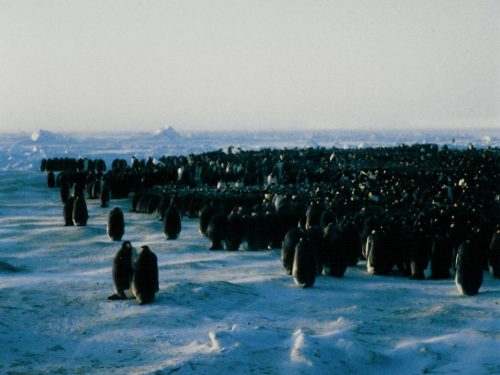Male emperor penguins have long been thought to make the ultimate sacrifice: fasting for almost three months as they guard their eggs. As it turns out, however, the penguins are not quite as selfless as they’ve previously been portrayed. Researchers from the Scripps Institution of Oceanography discovered that male emperor penguins sometimes break their fast during the incubation period.
Typically, females leave the egg with the males for approximately for three or four months; the male’s feet keep the egg warm by cradling it with a fleshy layer of skin. Scientists have long thought that the male penguins stay by the egg’s side at all times during this period. They often spend these bone-chilling Arctic months sleeping to preserve their energy, but they still lose up to half of their body weight. It is such a challenging task that some emperor penguins do not survive the winter.
Other males, however, have other ideas. After tracking several emperor penguins, the researchers observed that these males snuck off in the middle of the night to hunt for fish in the open water. This phenomenon is thought to be more common among penguin colonies based near the southern coast, where the journey to the ocean is much shorter. These “early feedings” are significant because they increase the male’s chance of survival in the winter. By snacking, the male makes it far more likely that he will successfully incubate the egg and ensures the chick’s chance at life in the coming months.
References
- Kooyman, G. (2018). Emperor penguins break their fast with night-time snacks. Nature. Retrieved from https://www.nature.com/articles/d41586-018-00477-9
- https://www.antarctica.gov.au/about-antarctica/wildlife/animals/penguins/emperor-penguins – used site for breeding habits
- https://earthsky.org/earth/male-penguin-eggs – used site for body weight statistic
- Kooyman, G. (2018). Night diving by some emperor penguins during the winter breeding period at Cape Washington. Journal of Experimental Biology. doi:10.1242

